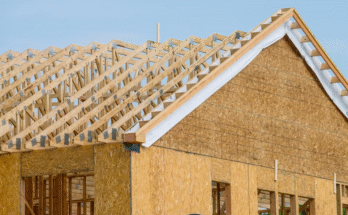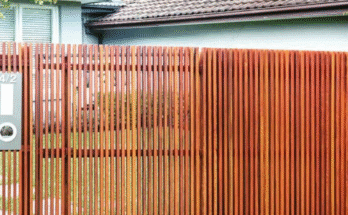When building or renovating a home, understanding roof framing is critical to ensuring long-term strength, weather resistance, and architectural success. This essential process defines how your roof is supported and shaped, determining everything from attic space to load-bearing performance. Whether you’re designing a simple gable roof or planning a complex roofing system with multiple slopes and connections, getting the framing right is key to a strong and reliable roof.
In this guide, we’ll cover:
- What roof framing is: The foundation of every roof structure.
- Types and materials: From rafters to engineered trusses.
- Practical insights: Load considerations, layout tools, and framing techniques.
🤔 What Is Roof Framing?

The Structural Foundation of the Roof
Roof framing refers to the internal framework that supports your roof’s weight and shape. This includes rafters, roof trusses, beams, and ceiling joists—all of which tie into the exterior walls and work together to support roofing materials. The roof structure must account for load-bearing requirements, insulation space, ventilation, and aesthetic goals like cathedral ceilings or dormers.
Why It’s So Important
An improperly framed roof can sag, leak, or fail during severe weather. Roof framing impacts your home’s insulation, ventilation, ceiling design, and overall value. It also dictates whether your home can accommodate additional space in the attic or offer full access for HVAC and storage systems.
⭐️ Common Roof Framing Systems
Rafters
Rafters are diagonal framing members that run from the ridge board to the top plate on the wall. Common rafters are used in traditional roof framing and allow for custom layouts, often seen in older homes or custom builds. Proper rafter layout includes calculating rise, run, and rafter length using tools like a framing square or speed square.
Rafters typically connect at the ridge and rest on the outside walls, with a rafter tail extending past the wall to create an overhang. For added strength, collar ties and ceiling joists are used to prevent spreading at the base.
Roof Trusses
Roof trusses are prefabricated triangular frames that create the shape of the roof. They’re efficient, quick to install, and eliminate the need for interior load-bearing walls. Engineered trusses are designed for specific spans and roof pitch, ensuring consistency and reducing labor on-site. They’re ideal for projects where speed and uniformity are priorities.
Trusses include key components like the top chord (rafters), bottom chord (ceiling joists), and web members, all arranged to distribute loads evenly. While they limit attic customization, they’re commonly used in modern residential construction.
Stick Framing
Stick framing involves building the entire roof structure on-site, piece by piece. This method uses common rafters, a ridge board, and horizontal members like ceiling joists and collar ties. It allows for more flexible designs, including open layouts like a cathedral ceiling or space-saving gable roof variations.
Though labor-intensive, stick framing is ideal for custom homes where rooflines vary and components like jack rafters, valley rafters, and complex dormers are part of the plan.
🏠 Roof Framing Styles and Configurations

Gable Roof
The gable roof is one of the most common and efficient roof framing designs. It features two sloped surfaces that meet at a central ridge, forming a triangular shape. It’s straightforward to frame using either rafters or trusses and provides good ventilation and attic access.
Hip Roof
A hip roof has slopes on all four sides that converge at the top. It requires more framing precision due to hip rafters, valley rafters, and complex connecting rafters, but provides excellent wind resistance and water runoff. Hip roofs work well for areas prone to high winds or heavy snow loads.
Gambrel and Mansard Roofs
These dual-slope systems offer increased attic space and are often found in barns or French-style homes. They require careful rafter layout and strategic use of collar ties and ceiling joists to handle shifting loads across the building.
Shed Roof
A shed roof is a single-slope design, perfect for modern homes, additions, or lean-to structures. It requires fewer materials and is ideal for small spans, although roof pitch and drainage planning are important for long-term performance.
🪵 Materials Used in Roof Framing
- Dimensional Lumber: Standard lumber like 2x6s, 2x8s, and 2x10s is commonly used for framing rafters, ceiling joists, and collar ties. It’s easy to cut with a circular saw, nail in place, and calculate rafter size and span using a framing square and rise-over-run measurements.
- Engineered Wood: For longer spans or specialized designs, engineered products such as engineered trusses, laminated beams, or structural composite lumber offer better load handling and reduced warping. These are often used in modern construction or for larger roof assemblies.
- Steel Framing: While not common in residential homes, steel framing is used in commercial buildings or homes needing high fire resistance. It’s ideal for open layouts and long unsupported spans but requires specialized tools and higher installation skill.
🛠️ Roof Framing Techniques and Tools
Measuring and Cutting Rafters
To properly cut rafters, builders calculate rafter length using the Pythagorean theorem based on the roof pitch. The bird’s mouth cut allows the rafter to rest securely on the top plate of the wall. The rafter tail extends past the outside edge to create the overhang.
Using a Framing Square
The framing square helps determine the angle of cut for the rafter top edge, bird’s mouth, and rafter tail. It’s essential for laying out rafters, particularly in roofs with unusual slopes or valley rafters and jack rafters.
Creating a Solid Ridge
The ridge board runs horizontally at the peak of the roof, supporting the upper ends of the rafters. In some designs, a ridge beam may be used instead, providing a load-bearing top support in open-concept spaces with cathedral ceilings.
Layout Tips
Use chalk lines or a perpendicular line from the wall plate to ensure rafters are spaced correctly. Consistency is key in maintaining even slope, ventilation space, and finish material layout. The vertical line drawn at each rafter end helps align angles for tight fits and clean finishes.

📋 Load and Design Considerations
Roof Pitch and Span: The roof pitch determines the steepness of your roof. A steeper pitch sheds water and snow better but may require longer rafter length and stronger supports. Spans must be calculated based on material strength, rafter size, and desired ceiling design.
Wall Height and Support: Proper wall framing supports the roof load evenly. The wall height affects how high the ceiling will be and how steep the pitch must be. Supporting the first rafter at the outside wall is crucial to maintaining the roof’s structural integrity.
Ventilation and Attic Use: Good ventilation prevents moisture buildup and extends the life of your roof. Adequate spacing between rafters and ceiling joists allows airflow and insulation, especially important if you plan to use the attic for storage or living space.
💪 When To Reinforce or Replace Roof Framing
Signs of Structural Trouble
If you notice sagging, cracking drywall, or leaks, it may be time to inspect your roof framing. Moisture, age, or storm damage can weaken trusses, warp rafters, or degrade connections to the outside corner or inside corner of your framing system.
Renovation or Roof Replacement
When replacing a roof, it’s a good idea to check for outdated or undersized framing. Modern codes may require updates to meet load standards, especially if you’re switching roofing material or adding new insulation layers.
Attic Conversions or Cathedral Ceilings
Adding a room or vaulting the ceiling changes how loads are distributed. This may require adding beams, upgrading rafter size, or installing a structural ridge beam for support.
⭐️ Roof Framing Is the Blueprint for Roof Success
Whether you’re installing a new roof, adding on to an existing structure, or restoring an older home, the quality of your roof framing matters. From common rafters and ceiling joists to engineered trusses and framing square precision, every element of the framing process supports the safety, longevity, and appearance of your roof.
Contact us today to schedule a consultation and get a free estimate—we’re here complete your roofing project with expert care and trusted craftsmanship.


